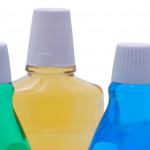
Around 15% of the population are said to suffer with dentine hypersensitivity although some studies suggest it may be as high as 73%. Dentine hypersensitivity (DH) is defined as a pain derived from exposed dentin, in response to chemical, thermal, tactile or osmotic stimuli, which cannot be ascribed to any other form of dental effect or disease.
The aim of this review was to evaluate the reported efficacy of home use of desensitizing mouthwashes, compared to placebo rinses, in reducing pain symptoms in patients with dentin hypersensitivity or root sensitivity.
Methods
Searches were conducted in the Medline and Cochrane Library databases supplemented by hand searches of the journals; Journal of Clinical Periodontology, Journal of Periodontology and Journal of Periodontal Research. Randomised controlled trials (RCTs) of at least 6-weeks duration of home use of desensitizing mouthwashes versus control mouthwashes in patients with DH or RS were considered. Studies in English, French or Spanish were included. Two reviewers independently selected studies, abstracted data and assessed risk of bias. Outcomes were compared using mean values with pooled data analysed using standardized mean differences (SMD) and 95% confidence intervals (CI)
Results
- 7 studies were included.
- 4 studies were of 6 weeks duration, 3 of 8 weeks.
- All but one of the studies was considered to be at high risk.
- Hypersensitivity was using stimuli: tactile, thermal or evaporative and daily-life stimuli. Various scales and measurement units were used.
- 4 studies were included in a meta-analysis of tactile stimuli, no significant difference was seen between the groups, SMD = 0.055 (95%CI; 0.218 to 0.327) P = 0.693.
- 6 studies were included in meta-analysis of thermal/evaporative stimuli, no significant difference was seen SMD = 0.247 (95%CI; 0.166 to 0.660) P = 0.074.
- 4 studies were included in a meta-analysis of patients’ subjective perception of hypersensitivity. Statistically significant differences in favour of active mouthwash were found, SMD = 0.801 (95%CI; 0.142–1.460) P = 0.004. Meta-regression showed a tendency towards an increased effect in favour of the test group with time.
Conclusions
The authors concluded
There exists a tendency towards a decrease in DH or RS scores with time in both treatment groups, with significant differences in favour of test group when sensitivity is evaluated in terms of patients’ self-reported sensitivity symptoms.
Comments
Only two major databases were searched for this review and there were some language limitations so it is possible that some relevant studies may have been excluded. A recent review (Dental Elf – 30th Apr 2015) suggested that a many of the agents for treating dentine hypersensitivity had some beneficial effect although toothpaste is the most common vehicle uses. This review only focuses on mouthwashes, unfortunately only a small number of small studies could be included and almost all of them are considered to be at high risk of bias. None of the more objective measurements identified any differences between the test mouthwashes and controls with the only difference being noted in the patients’ subjective perception of hypersensitivity. The included studies were also very heterogeneous, this together with their limited quality mean that the findings of this review should be interpreted with caution.
Links
Primary paper
Molina A, García-Gargallo M, Montero E, Tobías A, Sanz M, Martín C. Clinical efficacy of desensitizing mouthwashes for the control of dentin hypersensitivity and root sensitivity: a systematic review and meta-analysis. Int J Dent Hyg. 2016 Oct 20. doi: 10.1111/idh.12250. [Epub ahead of print] Review. PubMed PMID: 27762076.
Other references
Dental Elf – 30th Apr 2015

Dentine hypersensitivity: do mouthwashes help? https://t.co/3RcyfkPeCk
Mouthwashes for dentine hypersensitivity? https://t.co/D3XPrVMSMM
Limited evidence for mouthwashes to reduce dentine hypersensitivity? https://t.co/D3XPrVMSMM
Do mouthwashes reduce dentine hypersensitivity? https://t.co/D3XPrVMSMM
Don’t miss- Dentine hypersensitivity: do mouthwashes help? https://t.co/D3XPrVMSMM